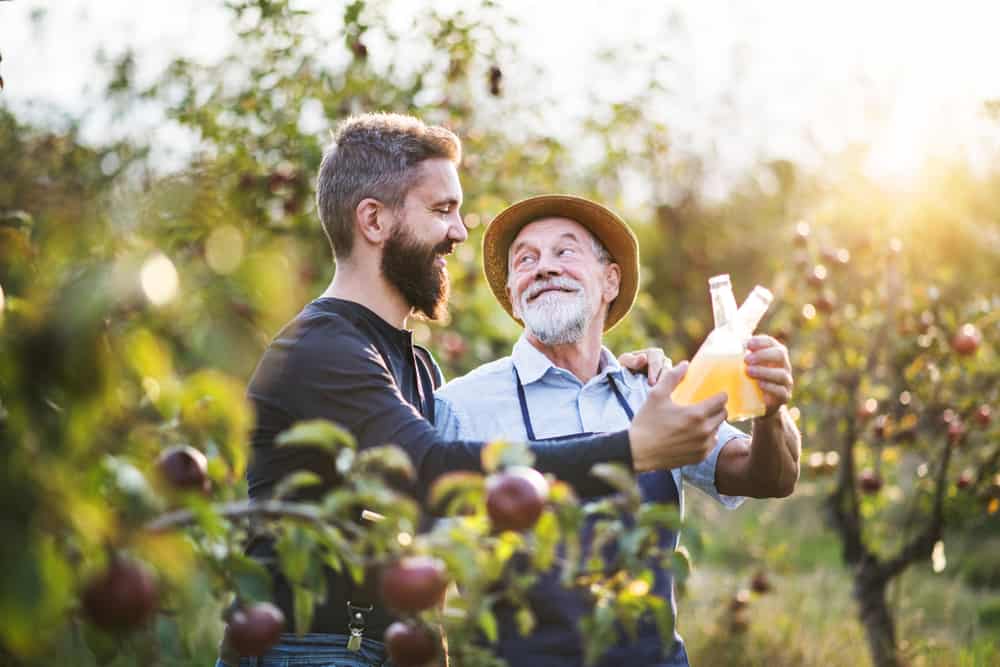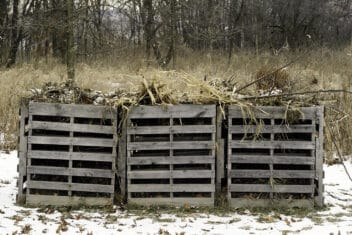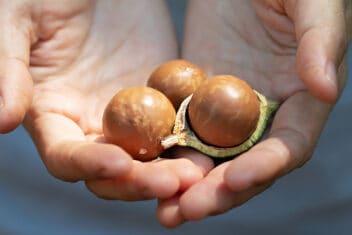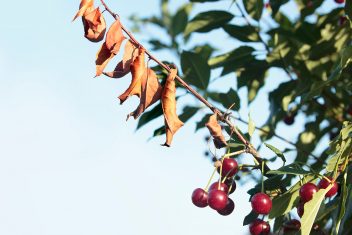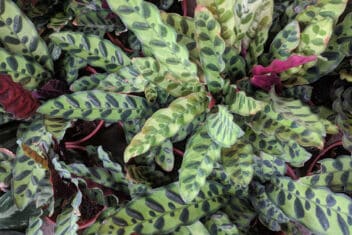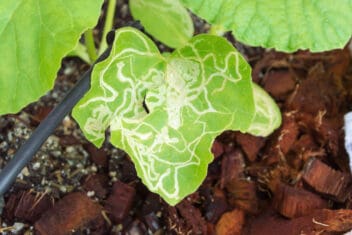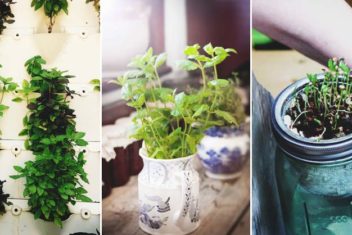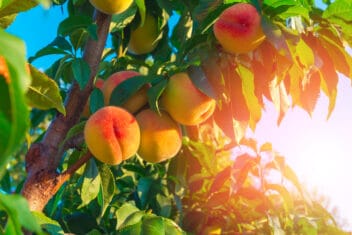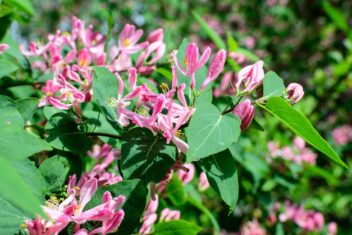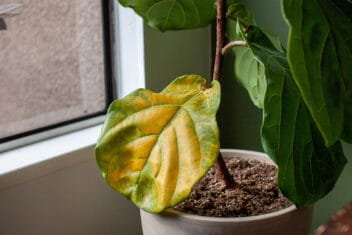There’s always a time during the apple harvest season when I start to get excited about making cider. It’s usually when the trees are laden and we’ve made all the puree, pie, muffins, and leather our freezer can hold. At that point, I start to make cider from my apple orchard.
Over time, I wanted a better quality drink because not all apples are created equal when it comes to cider. So I planted my own orchard dedicated to making the marvelous amber liquid. It was the turning point in my venture.
If you enjoy making your own cider or can’t wait to expand your endeavors, I highly recommend planting a dedicated space specifically cider makings. Plus, you’ll create a resource for generations to come.
Why You Need A Specific Orchard For Apple Cider
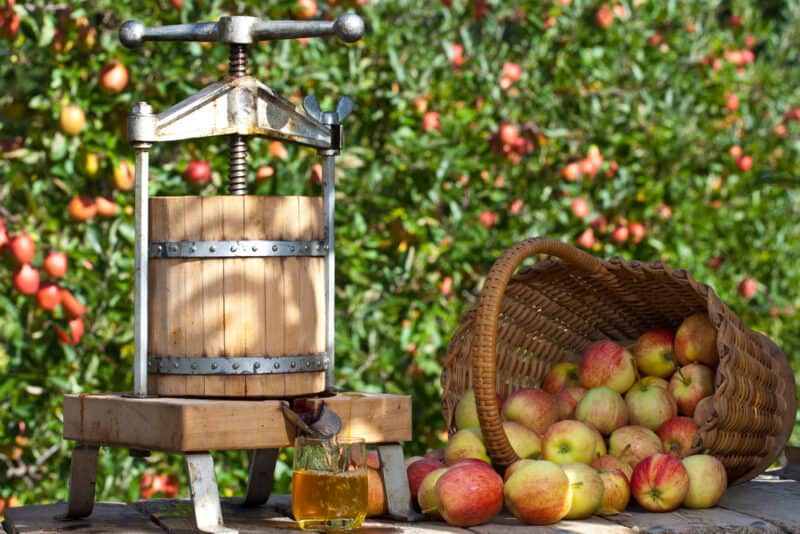
One thing I learned when using eating apples to make cider is the characteristic depth of flavor isn’t always present, and you can end up with an overly sweet drink. You need to tailor your orchard for the art of making cider. In this guide, we’ll show you the basics of growing an orchard with the goal of making excellent cider.
You need apples with low acidity, and high acidity, bitterness, sharpness, and sweetness. Add in apples that contain high levels of tannins, and you have a winning combo. Tannins provide bitterness, while acidity adds sharpness to your cider.
Don’t be overwhelmed a the thought of planting your own orchard for cider. With the right apple trees, you don’t need a lot of varieties. You need the right apples and the choice is up to you. You can add more trees if you feel the need and have the space.
Varieties of Cider Apples
This list could go on forever, so we’ll look at my favorite American cider apples but always check around your area for what other cider makers grow. Choosing your apples is the fun part because it determines the flavor of your cider. Other cider makers may let you in on their secret blends because many are grown from European cultivars.
There are around 1,000 apples suited to making cider, so there are lots of options.
Baldwin
This variety is hardy up to USDA Growing Zone 5 and is harvested in October. It has a smoky flavor, but can be a little difficult to grow. It’s worth it, though. ‘Baldwin’ is a popular and sought-after variety.
Cortland
Sweet and slightly tart, ‘Cortland‘ apples are good to grow in Zones 3 to 8. They tend to be resistant to browning, so are a great choice for cider. Harvest ‘Cortland’ in early October.
Golden Russet
‘Golden Russet’ provides full body to your cider. You’ll have a strong honey flavor mixed with stone fruit. Hardy in Zones 3 to 9, harvest in late October to early November. ‘Golden Russet’ is a good keeper, so it will withstand storage until other varieties are ready.
Harrison
‘Harrison’ is rich in flavor and produces a clear, well-balanced juice.
Liberty
The great thing about ‘Liberty’ apples is they’re perfect for a smooth cider and the tree is usually a prolific fruiter. Grow in Zones 4 to 7 in loamy soil. ‘Liberty’ is a semi-dwarf and resistant to many apple diseases. Harvest the large red apples around September.
McIntosh
If you live in a cooler climate, ‘McIntosh‘ is one to consider. When you first pick these apples, they’re quite tart, which is perfect for a cider blend. If you don’t use them all for cider, McIntosh becomes sweet when in cool storage.
This is a win-win apple, though with a catch. You need a crab apple variety to cross-pollinate with McIntosh. In mid to late September you can start to harvest.
Northern Spy
More hardy in winter than many other cider apples, ‘Northern Spy’ keeps producing right through November. It needs at least one other apple tree nearby, and it will produce a good harvest within about four years of planting. They also store well if you don’t use them all for cider.
Roxbury Russet
Dating back to 1635, this American heirloom is a classic that makes any cider orchard complete. Well known for the amount of sugar it holds, this is a sweet apple you can eat off the tree, but it’s fantastic for making cider.
Wickson Crab
This is a high-sugar and high-acid crab apple perfect for cider making. This crab apple is prolific and grows apples in bunches like grapes. It ferments beautifully and imparts layers of complex flavor into your cider.

Planning Your Apple Cider Orchard
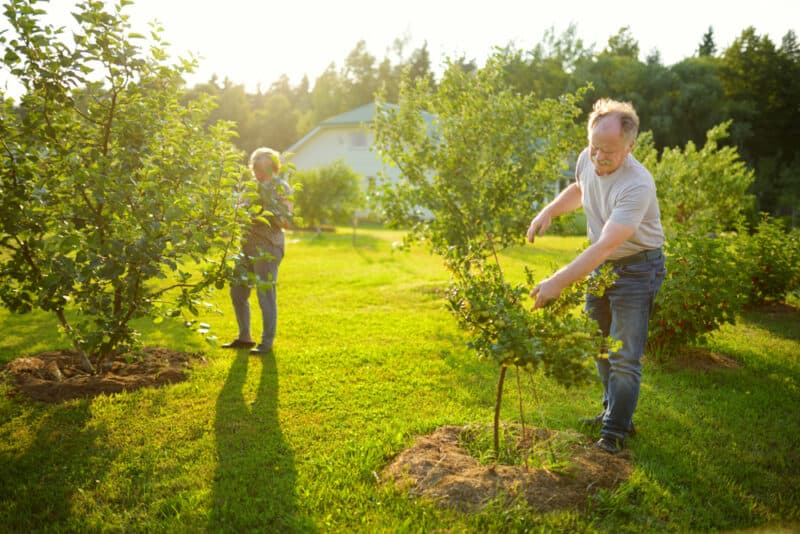
The first step is to choose your apples. If you have read the above list of varieties (not to mention the hundreds of others), you could be forgiven for being a little confused. We’ll give you our picks for starting your cider apple orchard, depending on the size of the orchard you have to plant.
Small Space Apple Cider Orchard
If you only have a small space, you can get away with planting one well-rounded variety to make cider. Try:
- Harrison
- Goldrush
- Virginia Hewes Crab Apple
- Macintosh
- Wisconsin Russet
If you do have a single varietal cider, you can always add apples you buy from other growers or stores for various batches to see what works well.
Medium to Large Space Apple Cider Orchard
Although having a single variety of cider apple is good for a small space, planting a few different varieties enables you to have multiple layers of flavor and mouth-feel. You can also make interesting batches by blending various apples and experimenting. Try any of the combinations from these flavor profiles:
Sweet
- Roxbury Russet
- Virginia Hewes Crab Apple
- Wickson Crab Apple
- Esopus Spitzenburg
- Dabinett
- Somerset Redstreak
Acidic
- Cortland
- Golden Russet
- Liberty
- McIntosh
- Northern Spy
- Grimes Golden
- Rhode Island Greening
Tanin
- Virginia Hewes Crab Apple
- Sommerset Redstreak
- Harry Masters Jersey
- Brown Snout
- Ashton Bitter
- Kingston Black
The point of a specific orchard for cider is that you can create your own blends, tastes, and flavors. You can always add other varieties. Make sure you find out what is available and grows well in your area before you commit to buying the trees.
Ideal Conditions For Your Apple Cider Orchard
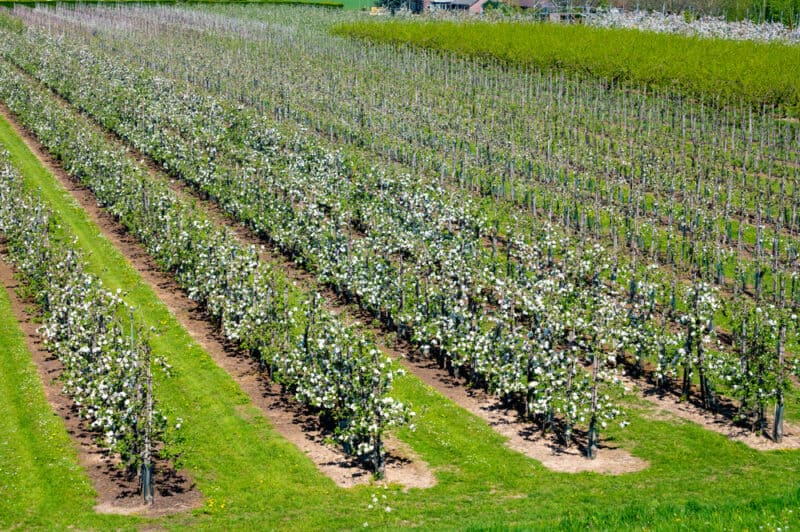
Situating your orchard is important. You want apples with few pests and diseases and big harvests. You also want your apples to reach peak condition to take advantage of the various characteristics of each variety.
Apple trees need plenty of sunshine. Without it, you end up with very small apples and poor-quality fruit. Not ideal if you’re making cider.
Prevailing winds can interfere with pollination, so look for a sheltered area with plenty of natural airflow. Make sure the soil is a rich loam with good drainage. The earth should be close to neutral with a pH between 6.0 and 7.0.
Plant the trees about five feet apart, and rows 15 feet apart, depending on the cultivar.
A rule of thumb is a 20 square feet of space is enough for a full-size apple tree, two semi-dwarf trees, or four dwarf trees. Obviously the more land, the more trees you can plant.
Just make sure the varieties you choose for a small orchard all bloom and produce fruit at the same time. If you have a bigger orchard, you can stagger harvest and produce additional batches of cider as the season goes on.
For the small-scale beginner, you really only need about 36 to 40 apples to make a gallon of cider. Older, full-sized trees can produce 700-800 fruits.
For more advice on how and when to plant apple trees, pests and diseases, and basic care, read our in-depth guide here.
Harvesting Cider Apples
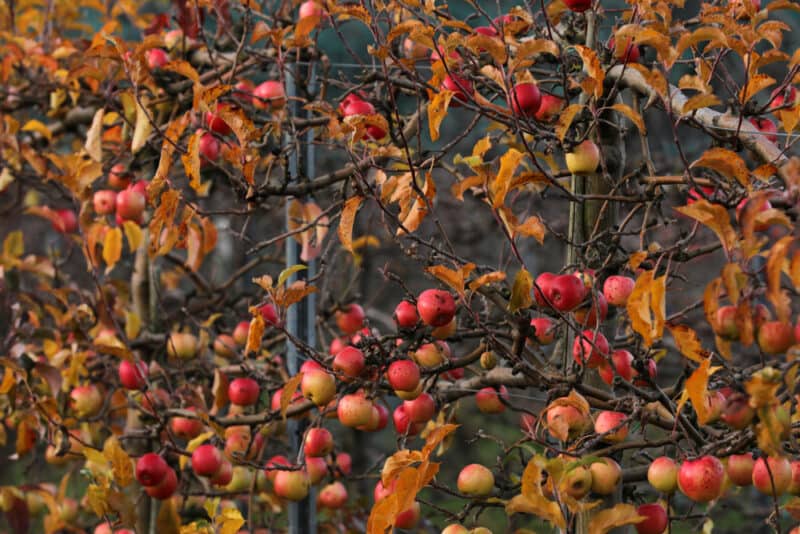
The biggest difference between harvesting an eating apple and a cider apple is timing. Eating apples are picked early on in their ripeness to maintain crispness.
Cider apples must be left to fully develop their flavor, especially sweetness. Leave them until they literally fall from the tree without assistance from the wind. Once they have fallen, don’t leave them on the ground for more than a couple of days or the bugs and critters will get them.
Harvesting apples for cider requires you to allow the sugars in the fruit to peak.
Tips for Growing Your Own Cider Apples
- Buy your trees from a reputable seller. You want good quality trees that won’t cause you problems in the future. Most traditional heirloom varieties are grafted on to dwarf root stock. This means the trees remain small for ease of harvesting, but the trunks are often weak. They might need staking or trellising permanently. Think of your orchard as more of a vineyard that a traditional orchard.
- In summer, remove the suckers that grow from the rootstock.
- Prune in late winter or very early spring. Remove and branches that prevent good airflow throughout the tree.
- Apply fertilizer once the trees begin to fruit.
- Use organic sprays like neem oil to deter pests and disease.
- Mulch to retain moisture. You want your cider trees to be able to produce juicy, healthy fruit.
- Write down the type and amount of various apples per batch. If you make a beautiful cider, you want to be able to make it the same next season.
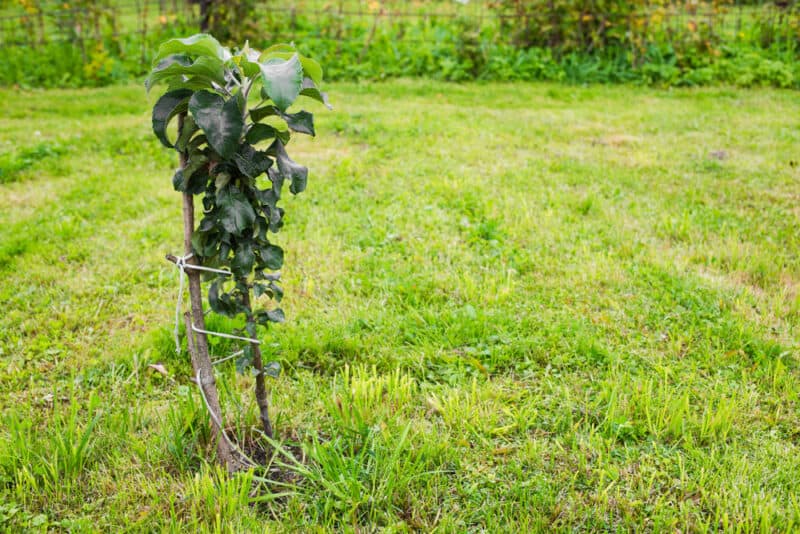
Starting an apple cider orchard should be as fun as drinking the end product. Don’t get too hung up on varieties and sweet flavors versus tannin. Every batch of cider I’ve made from many types of apples has been totally drinkable. Just have fun experimenting!
